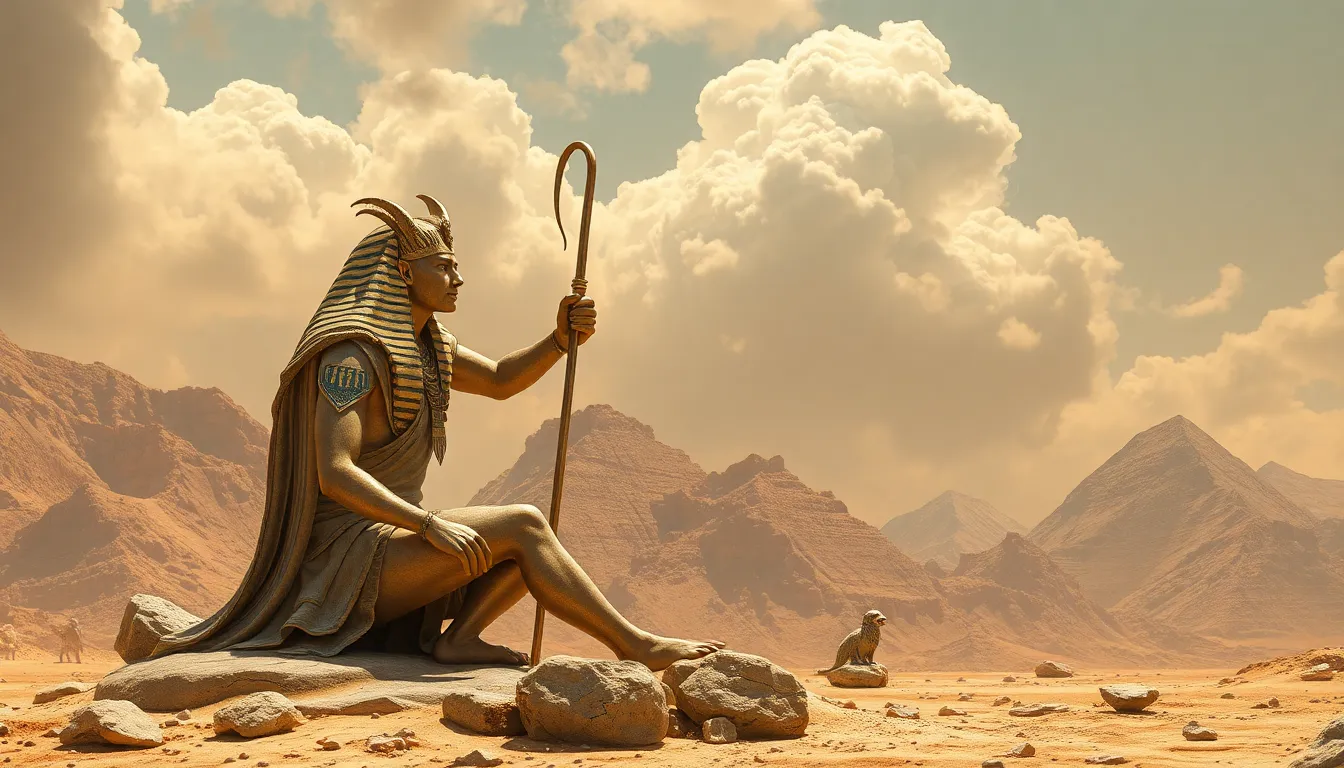The Role of the God Geb in Earthly Matters
I. Introduction
In the rich tapestry of Egyptian mythology, Geb stands out as a pivotal figure embodying the essence of the Earth. Known as the personification of the Earth, Geb plays a fundamental role in the creation myths and the sustenance of life, directly influencing both the physical realm and the moral fabric of society. This article will explore Geb’s significance in relation to Earth and humanity, detailing his historical context, relationships with other deities, influence on humanity, and his legacy in modern times.
II. Historical Context of Geb
Geb’s worship is deeply embedded in the history of ancient Egypt, with roots tracing back to the earliest periods of Egyptian civilization. Initially revered as a god of the earth, his character and narratives evolved over time, influenced by changing societal needs and beliefs.
- Origins and Evolution of Geb’s Worship: Geb was often depicted as a green man, symbolizing fertility and vegetation. His worship grew alongside agriculture, as ancient Egyptians relied heavily on the fertility of the soil for sustenance.
- Geb’s Place in the Egyptian Pantheon: Geb is one of the Ennead of Heliopolis, a group of nine deities that includes his sister Nut, the sky goddess, and their offspring, Osiris, Isis, Seth, and Nephthys.
- Major Myths and Stories Featuring Geb: One of the most significant myths is the separation of Geb and Nut, where Geb represents the earth while Nut represents the sky, an act that created space for life to flourish.
III. Geb as the Personification of Earth
As the embodiment of the Earth, Geb holds great symbolic significance in relation to fertility and agriculture, which were vital to the ancient Egyptians.
- Symbolism of Geb in Relation to Fertility and Agriculture: Geb’s body was believed to be the fertile soil from which crops grew. He was often associated with the harvest and the abundance of nature.
- Geb’s Representation of the Physical Realm: Geb is depicted lying on the ground, with Nut arching over him, symbolizing the physical world and the connection between earth and sky.
- Connection to the Life-Giving Properties of Soil: The Egyptians revered Geb not just as the earth itself but as a source of sustenance, emphasizing his role in agriculture and the cyclical nature of life.
IV. Geb’s Relationships with Other Deities
Geb’s interactions and relationships with other deities are crucial for understanding his role in Egyptian mythology.
- The Relationship Between Geb and Nut, the Sky Goddess: Geb and Nut were often depicted in a loving embrace, symbolizing the interdependence of earth and sky. Their union led to the birth of important gods and goddesses, showcasing the importance of their relationship in the cosmic order.
- Role of Geb in the Osirian Myth: In the Osirian myth, Geb plays a significant role as the father of Osiris, Isis, Seth, and Nephthys. His relationship with Osiris, in particular, emphasizes themes of death and resurrection.
- Interactions with Other Gods: Geb’s myriad interactions with deities such as Ra and Horus reflect his integral role in maintaining the balance of the cosmos and earthly matters.
V. Geb’s Influence on Humanity
Geb’s influence extends beyond the divine realm into the lives of humanity, shaping their existence and moral frameworks.
- Geb’s Role in the Creation of Humans: According to mythology, Geb was involved in the creation of humanity, highlighting his importance as a life-giving force.
- Concept of Divine Justice and Earthly Governance: Geb was often viewed as a judge, overseeing the moral actions of humanity and ensuring justice prevailed on earth.
- Influence on Human Morality: Through his role as a judge and sustainer of life, Geb influenced ethical standards and societal norms in ancient Egyptian culture.
VI. Geb in Rituals and Worship
The veneration of Geb was an important aspect of ancient Egyptian religious life, characterized by various rituals and practices.
- Practices Associated with the Veneration of Geb: Ancient Egyptians performed rituals to honor Geb, often involving offerings of grain and other agricultural products.
- Festivals and Ceremonies Honoring Geb: Festivals celebrating the harvest were dedicated to Geb, emphasizing his role in fertility and abundance.
- Art and Symbolism Related to Geb: In ancient art, Geb was depicted in various forms, often shown lying on the ground with green vegetation sprouting from him, symbolizing life and fertility.
VII. Modern Interpretations and Legacy of Geb
In contemporary spirituality, Geb’s legacy continues to resonate, reflecting a resurgence of interest in ancient Egyptian mythology.
- The Resurgence of Interest in Geb: Modern spiritual practices often reference Geb, celebrating the connection to nature and the Earth.
- Symbolic Meanings of Geb in Modern Contexts: Geb represents stability, fertility, and the importance of environmental stewardship, echoing contemporary concerns about nature and sustainability.
- Influence in Popular Culture: Geb has appeared in various forms of literature, art, and media, symbolizing the enduring fascination with ancient mythologies.
VIII. Conclusion
In summary, Geb’s significance in earthly matters is profound, influencing not only the ancient Egyptians’ understanding of the natural world but also their moral and ethical frameworks. His legacy endures, as modern interpretations continue to highlight his relevance in contemporary spirituality and environmental consciousness. The story of Geb reminds us of the interconnectedness of all life and the importance of honoring our planet.




